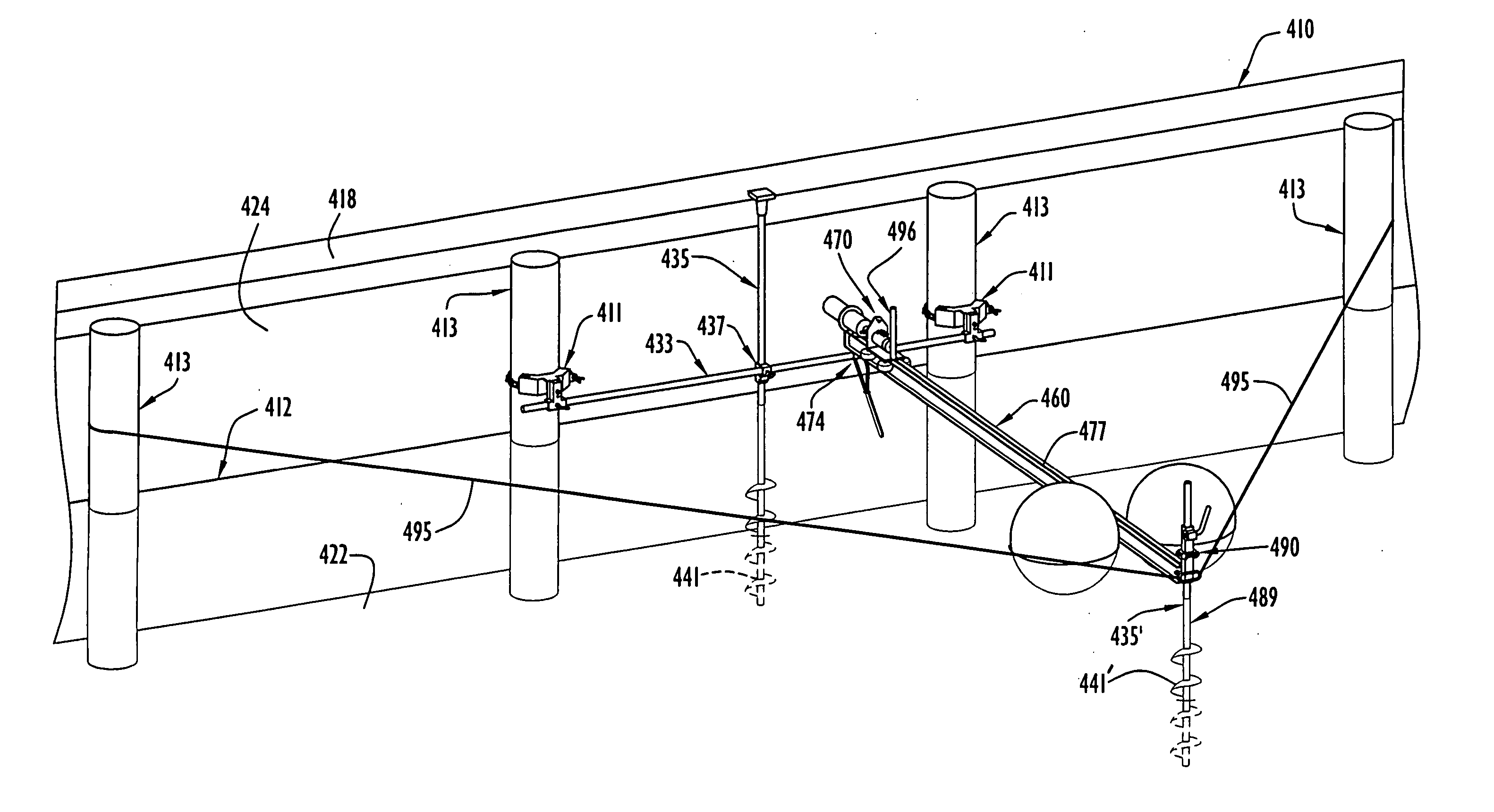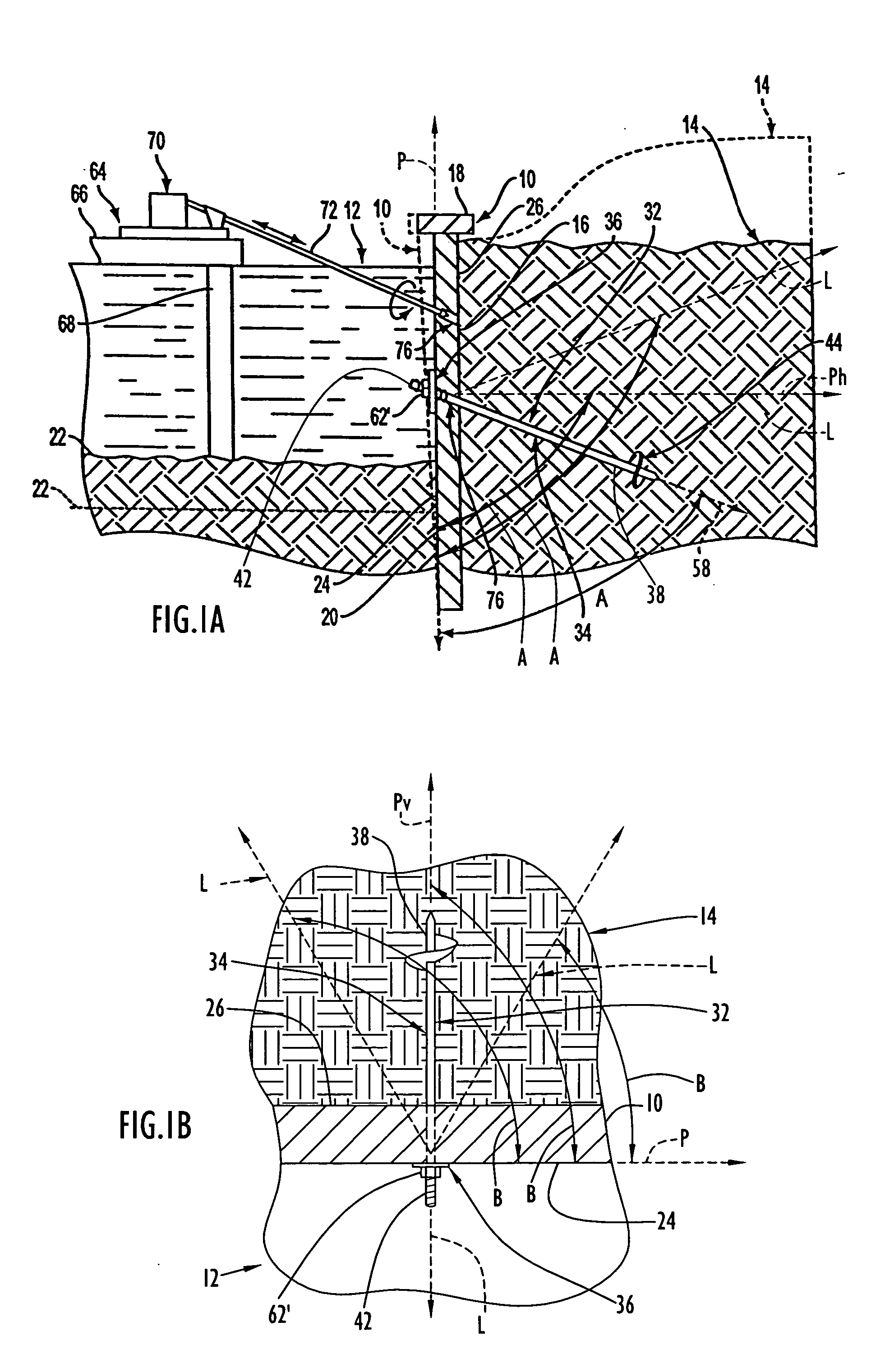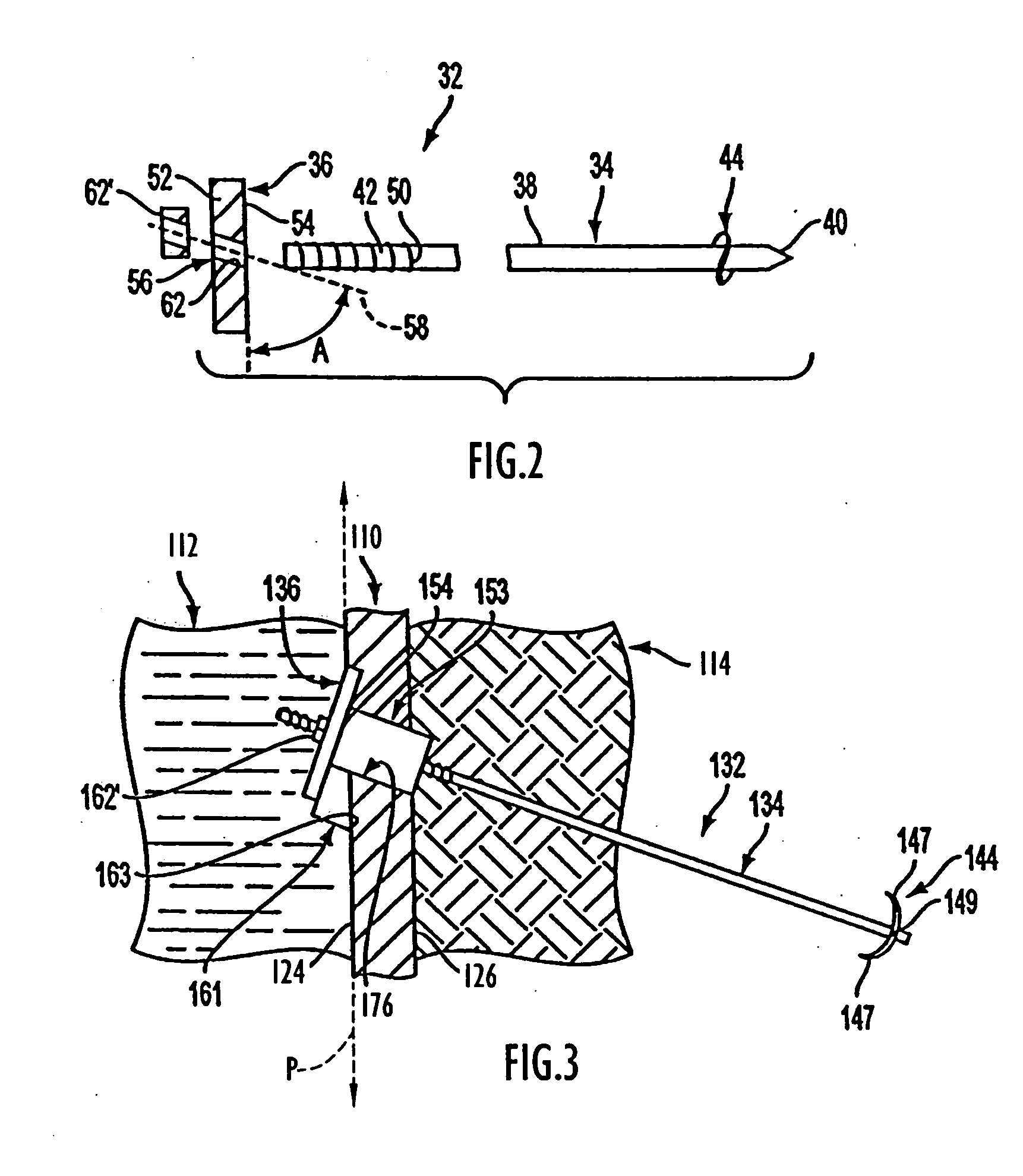Since the retained earth exerts greater pressure against seawalls than the pressure exerted against the seawalls by the water, seawalls are oftentimes damaged or destabilized during their lifetimes as evidenced, for example, by movement, displacement, shifting,
cracking and / or misalignment of the seawalls.
Sometimes seawalls are placed at risk for damage or
instability due to a change in conditions occurring subsequent to installation of the seawalls.
The lesser
depth of penetration for the
toe portion into the earthen floor may no longer be sufficient for the seawall to support the pressure of the retained earth such that the seawall is susceptible to damage or
instability.
In some cases, the height of the retained earth on the earth facing side of an existing seawall may be increased, causing increased pressure of retained earth against the seawall by which the seawall may be damaged or destabilized.
A type of damage known as “
toe out” may occur in seawalls where the
toe portion shifts or displaces outwardly in a direction away from the retained earth due to the toe portion being insufficiently embedded in the earthen floor.
In addition to the pressures of retained earth, seawalls may be damaged or destabilized directly or indirectly due to other conditions including collisions or other impacts,
corrosion, environmental factors, and age.
The latter methods are costly, obtrusive, and can initiate damage in other portions of the seawall.
Where vertical pilings are used to
shore up a portion of a seawall, installation of the pilings can cause portions of the seawall farther down to fail in a “domino” effect.
However, the installation
system of Heimsoth et al requires
heavy equipment necessitating major cost and effort to transport and assemble, and requires that
heavy equipment be placed on land on the earth facing side of the seawall.
Prior apparatus and methods for repairing and / or strengthening seawalls and other retaining walls have various disadvantages including complicated structure and installation steps, major disruption, the need for excavating and / or disturbing the earth, the need to bring heavy machinery onto property on the earth facing side of the seawall, lengthy regulatory permitting requirements, partial or complete demolition of existing walls, the need to temporarily hold back or contain water during installation, the need to install additional and / or replacement wall structure, substantial duration of time from start to completion of work, the use of cementitious material to assist in anchoring, the need for backfill, and the inability to execute seawall stabilization from the water side of the seawall.
Prior apparatus and methods which require substantial earth-side access or earth-side excavation are untenable where homes, other structures such as docks and pools, and / or
landscaping are situated close to seawalls, making it undesirable and even prohibitive to disturb the earth or bring
heavy equipment onto the land on the earth facing side of the seawall and / or to conduct seawall maintenance from the earth facing side.
Prior attempts at stabilizing seawalls have failed to provide an integrated
system of components to accomplish stabilization of various types of seawalls quickly, efficiently and economically from the water side of the seawall.
Prior apparatus for repairing and / or strengthening seawalls and other retaining walls are essentially static and non-adjustable, and the use of cementitious material generally prevents adjustability in response to dynamic changes in the walls.
Prior apparatus for repairing and / or strengthening seawalls and other retaining walls are essentially permanent and non-removable, especially where cementitious material is utilized.
Prior apparatus for repairing seawalls and other retaining walls are in general unsuitable for monitoring changes occurring in the walls over time.
Many prior apparatus and methods for repairing seawalls are environmentally incompatible and result in significant obstruction of or intrusion into the body of water on the water facing side of the seawall.
Prior apparatus and methods for repairing and / or strengthening seawalls and other retaining walls using anchors or tie rods generally lack the ability to rigidly interconnect a plurality of spaced anchors or tie rods installed in a wall to maintain the spacing between the anchors or tie rods in a desired direction.
Furthermore, prior apparatus and methods for repairing and / or maintaining seawalls and other retaining walls using anchors or tie rods do not allow a plurality of spaced anchors or tie rods installed in a wall to be adjustably interconnected to adjust the spacing between the anchors or tie rods.
Prior apparatus and methods for repairing and / or strengthening seawalls and other retaining walls do not contemplate closing openings in the walls by adjustably moving the walls between interconnected anchors or tie rods installed in the walls on opposite sides of the openings.
 Login to View More
Login to View More  Login to View More
Login to View More 


